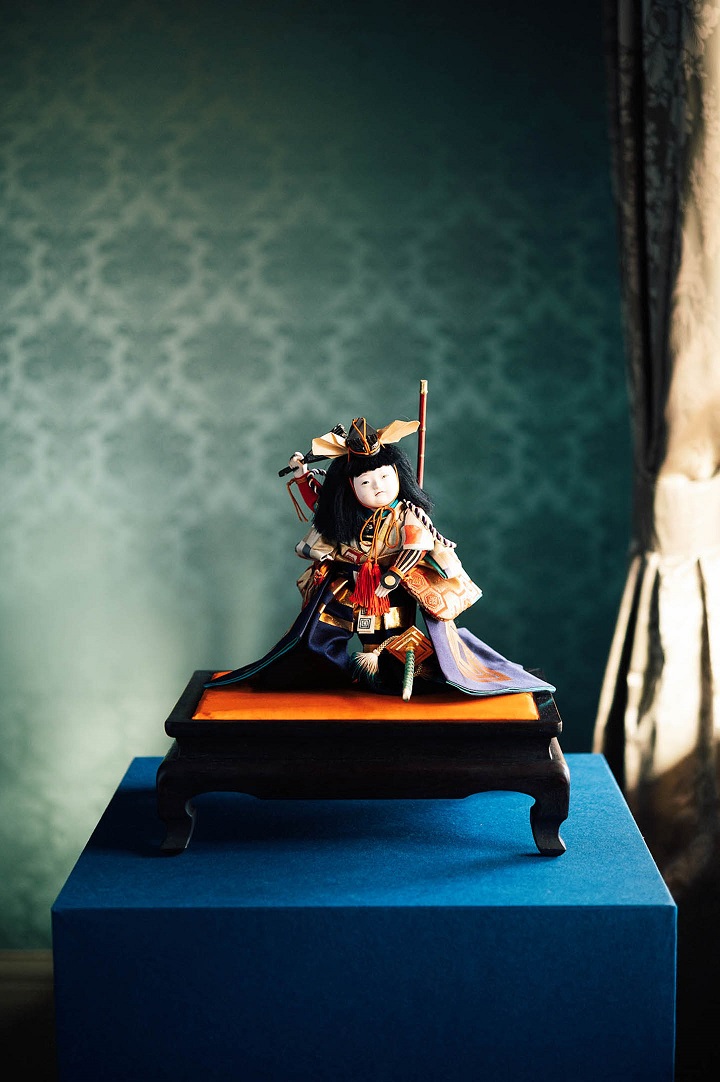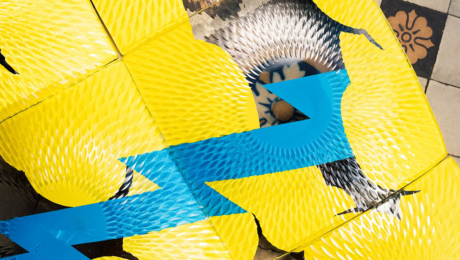

Edo Kimekomi Ningyo Koikko Matsuzaki Ningyo
2022.03.24
LIFEAssembly Hall | Contemporary Artist Noritaka Tatehana x Edo Kimekomi Ningyo Koikko Matsuzaki Ningyo

A long-running shop that works in the traditional crafts of Edo Kimekomi dolls and Edo seasonal festival dolls (Edo clothed dolls).
Third generation head Mitsumasa Matsuzaki, who also goes by the pseudonym Koikko, works on dolls using traditional techniques.
For the Kimekomi dolls, paulownia wood turned into powder is kneaded into clay and then pressed into a shape. Once the shape has hardened, the artisan carves it into a body. In a finishing touch, fabric is put into carved line on the body.
For Edo clothed dolls, the head is created in the same process as a Kimekomi doll. Sewn clothing is then worn over a body made with straw.
In this exhibition, Matsuzaki Ningyo has collaborated with a team led by contemporary artist Noritaka Tatehana to digitally restore photographic materials of the Iwasaki family’s seasonal festival dolls, that were once displayed in the family estate.

With monochromatic photographs being hand-painted by Matsuzaki, these photos were then handed onto Tatehana’s team who began the digital restoration process.
One can say that this has been a project only possible with the help of Matsuzaki Ningyo, who have built up a historical knowledge and refined techniques for the making of seasonal festival dolls over successive generations.

First Generation – Shogyoku Matsuzaki “Futaba Hina” Colleciton of Yoshitoku Co.,Ltd.
Clothed dolls made in 1932. As a work made by the first generation head, the “Shibaraku” kabuki dolls made during the end of the Taisho Period and beginning of the Showa Period are still preserved to this day.
Cooperation: Yoshitoku Co.,Ltd.

First Generation – Shogyoku Matsuzaki “Shibaraku” Collection of Naoki Hayashi
Cooperation: Naoteru Hayashi

Anima
A rhinoceros of the Anima series. While using traditional techniques, the series was a challenge to create new forms of kimekomi wooden dolls.

Kimekomi sample book
An instruction book with different fabrics for kimekomi wooden dolls. A large amount of fabrics are stored in the workshop, with the appropriate fabric carefully chosen according to each doll’s intended color scheme.

Tools
The entirety of the doll, from head to body, is made in the workshop. For this reason, various tools including carving knives, wooden spatulas, brushes, prick punches, tracing spatulas made for kimekomi, and fine-point brushes are all laid out in preparation.

Shōki
A collaborative effort between Zuisho Mochizuki who made the head and Matsuzaki Ningyo who made the body. A reproduction of a doll by Eitokusai, who ran a doll shop during the Meiji Period. The doll is a fine representation of the refined skills passed down along successive generations.

Making a Model
A makiwara(bundled straw) stand in Koikko’s personal workshop. Heads in the middle of production are normally placed here to dry, but other times reference materials are also pinned into the stand.

Edo Kimekomi Ningyo Koikko Matsuzaki Ningyo
Established in 1921, Matsuzaki Ningyo is a long-running shop that makes seasonal festival dolls. The shop continues to make various dolls using traditional techniques, currently under the brand of Koikko, the pseudonym of third generation head Mitsumasa Matsuzaki.
Photo by GION

NEXT: Tokyo Kumihimo Ryukobo
https://en.edotokyokirari.jp/exhibition/life/edotokyorethink2022-ryukobo/





